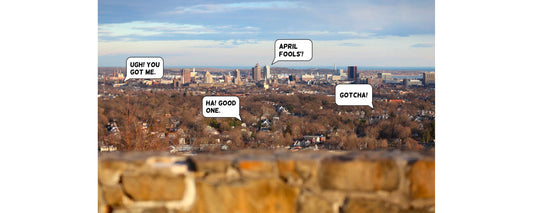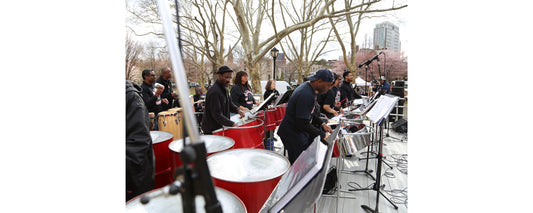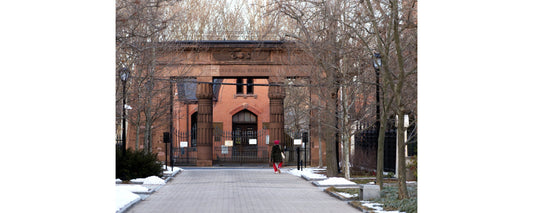New Haven has better reason than most to get a handle on its doors. This dates back at least as far as the Revolutionary War, when British soldiers spent the first week of July 1779 raiding towns on the Connecticut coast. In Fairfield and Norwalk, the raiders disembarked from their ships, skirmished with local militias, destroyed barns and public stores and seized or destroyed armaments. They then put those towns to the torch.
But according to letters written by New Haven residents at that time, published exactly 100 years later in Charles Hervey Townshend’s The British Invasion of New Haven, Connecticut, the redcoats generally spared the buildings of New Haven. The apocryphal story is that their commander, Major General George Garth, had decided the town was too pretty to burn. But he was also, according to Townshend, saddled with an increasingly drunken rank and file, a scrappy, motivated local militia and a receding tide in the harbor that threatened to ground his ships—leaving him only enough time to authorize a sortie of forced entries, whereupon his soldiers could demolish or plunder whatever they found inside.
So while Fairfield and Norwalk had to rebuild their homes and businesses from the ground up, New Haven would have been occupied first and foremost with replacing its doors.
sponsored by
In part because all three towns were simply pawns in a failed attempt to draw General Washington’s army out of its encampments in New Jersey, they weren’t immortalized in songs about the Revolution the way that Boston, Savannah, New York and Charleston were. That kind of immortality waited until 1969, when, two years after riots broke out in New Haven—four days of vandalism, looting and arson in The Hill and other districts—the song “Peace Frog” by The Doors evoked “blood in the streets of the town of New Haven” over a funky groove. The song’s composer, Jim Morrison, was ruminating selectively about trouble spots all over the country, and New Haven made the cut.
Sparked by the shooting of a knife-wielding Latino man by a white restaurant owner, the riots, as a New Haven Register headline noted at the time, were much more “deep-rooted”—a serious reckoning for a city that had recently capped off decades of growing socioeconomic resentment by bulldozing the homes of many of the city’s poorer residents. New Haven’s then-mayor, Richard C. Lee, was expressly concerned with living conditions in the old tenements and cold water flats of the Oak Street neighborhood and had planned to help its residents relocate, but it still looks to this day like a city doing to itself what the British couldn’t.
Violence during the riots was directed predominantly toward property, not people. But Morrison’s dramatic lyric may have also been informed by his arrest during a Doors concert at the New Haven Arena a few months after the riots, his resentment amplified by his apocalyptic imagination or perhaps vice versa. The police had first confronted Morrison and a groupie in another band’s dressing room before the concert, doing the sort of thing that bands and groupies did in the ’60s. When Morrison refused to leave the scene, an officer sprayed him with Mace. After taking the stage, he shared his indignation with the audience—interrupting his own rendition of “Back Door Man,” according to one concertgoer’s recollection and a 1968 profile in LIFE—until the police took him away. Morrison was charged by the end of the night with indecency, public obscenity and inciting a riot, as the reaction of audience members leaving the Arena had led to 13 more arrests—all of which could have been avoided if the doors to the Arena’s dressing rooms had had locks on them.
And there were plenty of locks to go around. Long before it helped shape The Doors, New Haven became a major player in the development of the door when the hardware manufacturer Sargent & Co., headquartered in the Long Wharf area, began making door locks. This was in 1884, and the addition of locks and other door components to its hardware catalog made Sargent one of the two most important manufacturers in the city, according to Carriages & Clocks, Corsets & Locks (2004), a coffee table book about New Haven’s industrial history. (The other most important manufacturer made the corsets.) The company grew from a single plant to five by the turn of the century and by the early 1900s was one of the largest employers in New Haven.
sponsored by
Sargent & Co. is considered a part of New Haven’s industrial past, but it technically never shuttered its doors (although most of its plant buildings were demolished to make way for Interstate 95). A series of buyouts starting in the 1960s eventually placed it under the umbrella of Assa Abloy, a Swedish lock and security door maker prominently positioned across the interstate from Long Wharf Park. “The answers to your door-opening challenges are here,” Assa’s website once said, and the boast still applies to their line of “ligature-resistant doors” which are hard to knock down but also free of sharp edges and catch points that would make it possible for a drunken soldier to injure himself trying.
Another prominent New Haven institution that’s in the door-making business is Yale University. According to a March 2017 article in Yale Alumni Magazine, an “on-campus millwork team” were on a mission to refurbish the wooden doors, numbering in the hundreds, to buildings across the campus. Some of those doors are three inches thick, sawn from logs that were first cut into lengthwise quarters to make a tidy grain out of the growth rings, then carved by hand into a simulacrum of a tree’s natural topography. They evoke the very oaks used to fashion them.
In one local case, it was the tree that evoked the door. The Door Tree, which stood in the Hamden woods until 2019 when a vandal cut it down, was actually two trees that grew side by side, sprouting around the time Charles Hervey Townshend wrote his history, until one of them took a seemingly miraculous 90-degree turn to join the other. The resulting human-sized door frame became a beloved curiosity, documented in local history books, countless photos and Ripley’s Believe It Or Not!. Visitors may have checked out the joinery or posed on top of it but were primarily compelled to walk through it. At the city of Hamden’s behest, the felled Door Tree was sawn into planks of the sort that might form an actual door (and some of the smaller pieces whittled down to make memorial pens). But it was as a doorway that the tree was inherently welcoming, while doors themselves are generally meant to regulate admission.
Making doors more welcoming was a design principle of the Citywide School Construction Program, begun in 1995 to renovate New Haven’s schools. Spared the wrecking ball ethic of the mid-20th century, federal-style schoolhouses like Mauro-Sheridan Interdistrict Magnet School in Westville sprang light-filled promenades from their rigidly symmetrical sides.
The hybrid school buildings are a sight common to every neighborhood in New Haven, perfectly epitomized by their points of entry. At Mauro-Sheridan, the old main entrance retains its stern, monumental place in the center, conveying a message of structure and establishment, while newer, green, tree-like archways lead to a courtyard and more doors, inviting the future of New Haven to step on through to the other side.
Written by David Zukowski. Image 1, featuring Mauro-Sheridan School, and image 3, featuring Yale’s Sheffield-Sterling-Strathcona Hall, photographed by David Zukowski. Image 2, featuring Jim Morrison’s famous mug shots, sourced from ultimateclassicrock.com. Image 4, featuring the Door Tree circa 1898, photographed by W. B. Welch. This updated story was originally published on January 17, 2019.









